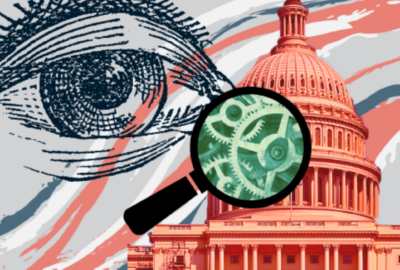Federal duplication and overlap: same story, bigger numbers
The numbers keep getting bigger, but it’s the same old story. Duplication and overlap in federal programs wastes billion. In its latest annual report, the...
The numbers keep getting bigger, but it’s the same old story. Duplication and overlap in federal programs wastes billion. In its latest annual report, the Government Accountability Office (GAO) finds 112 ways Congress and agencies could reduce redundancy. For the details, the Federal Drive with Tom Temin spoke with GAO’s Director of Strategic Issues, Jessica Lucas-Judy.
Interview Transcript:
Tom Temin And I think it’s fair to say that the immediate assumption that one has when this report comes out every year is that it’s totally ignored. It’s not the case. You point out that Congress actually has taken action to the tune of a lot of money on these particular findings that you’ve been doing for 14 years.
Jessica Lucas-Judy Absolutely. I mean, in those 14 years, we’ve identified more than 2000 recommendations for Congress and for federal agencies, and so far, about two thirds of them have been fully implemented and others have been partially addressed. And we’ve gotten $667 billion so far in financial benefits to the government for that.
Tom Temin Yeah. So that’s approaching let’s put it another way. Two thirds of $1 trillion.
Jessica Lucas-Judy Exactly.
Tom Temin All right. And this year there’s new matters. In other words, the opportunities or the potential for duplication and inefficiency, because this is not just a duplication report but an inefficiency report also. It’s kind of like the sun that’s always generating new mass coronal ejections, even though the old ones dissipate.
Jessica Lucas-Judy Right. So, we have some of the new areas that we highlighted this year. There’s several in the tax area. So, they’re things that the IRS and the Congress could help the IRS do to improve its audits for certain targeted groups like the high income, high wealth groups, they’re using a new model to select for auditing. And we made some recommendations for improvement there or in audits of large, complex partnerships. One of the things that we’ve recommended is the IRS actually define what it means by large, complex partnerships to be able to know how effective its audits actually are. And we think that there’s the potential for large savings there.
Tom Temin And, of course, the Defense Department is always ripe for ways to streamline and reorganize and so forth. And one of the top of your list was the Defense, Counterintelligence and Security Agency.
Jessica Lucas-Judy Right. So that one is related to its working capital fund. And we made recommendations that it adjusts the way that it calculates the amount of the cash balance in that fund to make sure that it’s got cash reserves that are appropriate to the expenses of the program, and that could save the agencies that use that program, potentially hundreds of millions of dollars in reduced prices.
Tom Temin And how do you come up with a figure like that? The estimate of savings.
Jessica Lucas-Judy The estimates that we present in the report, where possible, if it’s something that, you know, for example, if there’s a bill out there that’s been introduced, we’ll look to the Congressional Budget Office to see if it’s been scored, if there’s an estimate of the savings. Sometimes the agencies themselves have estimates in their budget justification or others. Sometimes it’s just sort of like, well, okay, here’s the total amount that’s currently being spent in this area. And if there’s even a 1% improvement, you know, the resulting savings would be, in some cases, millions of dollars to hundreds of millions of dollars. So, there’s a lot of different sources that we use to generate those estimates.
Tom Temin And some of these are, you know, in the hundreds of millions or tens of millions, but then you have ten-year savings that you’ve identified that are hundreds of billions. Well, there’s one, especially the Medicare payments by place of service, which sounds arcane. What is the recommendation there?
Jessica Lucas-Judy The recommendation there is for Congress to equalize the payments for Medicare, for certain Medicare services. Right now, there’s a difference in how Medicare pays for them, whether it’s in an office versus an outpatient facility. And equalizing those payments could result, according to CBO estimates, in $141 billion in savings over ten years.
Tom Temin Well, just a detail on that one. Do all those places have the same cost basis for what they charge.
Jessica Lucas-Judy That I’m not familiar with? But again, here we’re going with CBO’s estimate and the agency also, you know, CMS has supported this as well.
Tom Temin Sure. We’re speaking with Jessica Lucas-Judy, director of strategic issues at the Government Accountability Office. And in general, how do the opportunities that you present in the report come to GAO? It sounds like a lot of agencies generate even their own ideas. It’s not all from audits.
Jessica Lucas-Judy Right. So, all the things that we report in this annual report on fragmentation, overlap, duplication and cost savings come from the audits that we do throughout the year and will look for opportunities to make programs more efficient or more effective. Look for ways that agencies could collaborate better, maybe communicate, clarify roles and responsibilities. Who’s supposed to do what? What are the goals that they’re trying to achieve, and make sure that everyone is on the same page and make recommendations to the agencies, or if there’s a legislative change need, will make a recommendation to Congress. And so, this report, this annual report. Compiles all of those recommendations into one place that also allows us to track, over time, progress in implementing those recommendations and any savings that we can estimate from those.
Tom Temin And in that area of fragmentation, overlap and duplication, that’s always the most exciting. You know, I think President Obama pointed out that three different agencies deal with salmon or something at one time. I’m not sure that ever got fixed or not, but what are some of the fragmentations or the opposite of that duplication efforts that you’ve identified? What are some of the top ones this year?
Jessica Lucas-Judy Well, generally fragmentation is where you have more than one agency that are working together in sort of a related area. Overlap is when they might be serving similar beneficiaries or doing similar services, and then duplication is where they’re doing the same thing for the same people. One thing I want to emphasize that’s not necessarily bad. Sometimes you need some redundancy in there, or it takes multiple agencies working from different angles for different audiences, slightly different needs, because they’re trying to address big, complex problems, and it requires a lot of coordination and collaboration. So, a lot of the recommendations that we make are where agencies maybe are working together, but they’re not necessarily following all the NGO as previously identified eight leading practices for collaboration and effective collaboration among agencies. And so, they might be addressing some of those, but maybe there’s others that they could do better. As I mentioned before, you know, the idea of clarifying roles and responsibilities. You also want to know who’s in charge and who’s responsible for what. You want to have clear an idea of what the goals are that you’re trying to achieve. Sometimes there’s a need for shared language. You know that you might have something that sounds on its face like it’s pretty obvious. But then when you get down in the in the weeds, you find out that they’re actually talking about two different things. And that makes it very difficult to be able to share ideas. And so, we had some recommendations this year around improving collaboration in things like federal autism research and federal dietary guidelines and trying to track the effectiveness of anti-child trafficking efforts. So, a lot of these you know, so again, very big complex things. And they just needed a better shared idea or shared understanding of what the goals are. And make sure that all of that is documented well too.
Tom Temin Right. And then there are those items that involve industry such as federal agencies, software licenses. This is always a fragmentation problem because the vendors like it that way, because they do better if it’s fragmented and not one big license for the same thing for every agency that’s using it.
Jessica Lucas-Judy But it can also be helpful to have some of that fragmentation, but to have some consistency. So, the industry partners are not having to do it one way for one agency and then do a completely new set of documentation or a new set of things, learn things differently to work with another agency, you want it to be sort of consistent. One of the areas that we highlighted this time was on the background investigations and security clearances. One of the problems there is there’s supposed to be reciprocity. There’s supposed to be some recognition if you get a clearance. And this could go for contractors as well as federal agencies. If you get a clearance or a background investigation, for one, it should be good for another agency. But the agencies we found didn’t necessarily trust each other, didn’t necessarily trust their processes. And again, also didn’t necessarily have access to the data systems to be able to check the background investigations or to see if there was any period where somebody wasn’t covered. And so, we made recommendations that the agencies work together better to try to overcome some of those challenges.
Tom Temin Sure. I call that one FedRAMP for people, you might say. And did the FedRAMP program itself make it in there? Because that’s sometimes where even though someone is certified, the other agency won’t accept it, and they make the contractor and the agency go through hoops to recertify the same vendor.
Jessica Lucas-Judy Right. I know FedRAMP has been something that Gia has been tracking for a long time and made a number of recommendations in that area.
Tom Temin All right. So, 112 and then there are some things agencies can do on their own. Some things Congress has to do.
Jessica Lucas-Judy Exactly. So, Congress so far has we still have about little more than half of the recommendations to Congress are still open. We’ve been trying to track the bills that that have been introduced that would help to address some of the areas that we have made in the past. There’s also some where we’ve made recommendations to agencies over the years and haven’t necessarily seen progress. And so now we come back and make a recommendation to Congress that Congress please require this agency to do this. And one of the tax areas was one back in 2007. I think we had made a recommendation that IRS needed to have a strategy for addressing the tax gap, the difference between the taxes owed and the taxes that are paid voluntarily for sole proprietors. Those are individuals, not incorporated businesses. And that can include, you know, gig workers as well as social media influencers, drivers for different systems and things like that might not even necessarily know that they are sole proprietors. It’s not a term that many people are all that familiar with and so don’t necessarily know what their tax obligation. But IRS is estimated that the tax gap from sole proprietors, you know, underreporting their income could be as high as $80 billion a year. And so, we recommended that they have a strategy that would address that tax gap. And so far that hasn’t happened. And so, in 2023, we recommended that Congress actually require IRS to have that.
Tom Temin But one way or another, they’re all real money. Jessica Lucas-Judy is director of strategic issues at the Government Accountability Office. Thanks so much.
Jessica Lucas-Judy Thank you. Always a pleasure.
Copyright © 2025 Federal News Network. All rights reserved. This website is not intended for users located within the European Economic Area.
Tom Temin is host of the Federal Drive and has been providing insight on federal technology and management issues for more than 30 years.
Follow @tteminWFED






